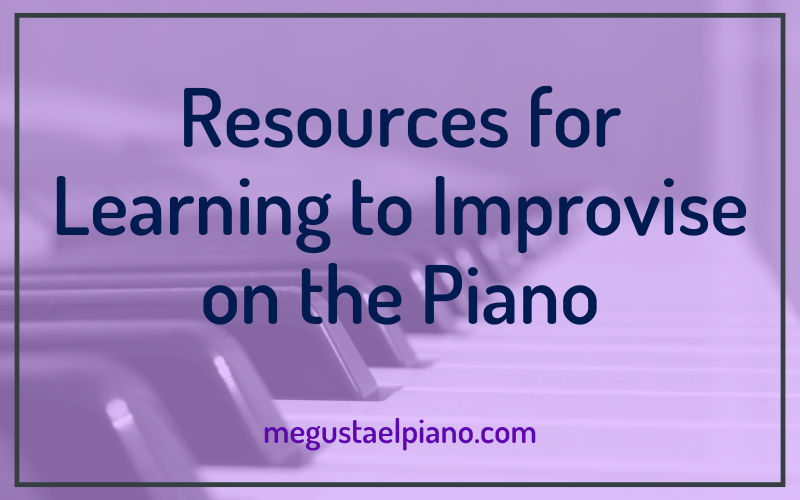If you follow us on Instagram, you’ll already know that at megustaelpiano we’ve been celebrating Dorian Week to mark the publication of two of my pieces written in this mode, included in Concept Collection 12 by Nicola Cantan.
Now I’d like to share with you the videos we’ve made. To truly understand any theoretical concept, such as the Dorian mode, it’s essential to approach it in many different ways. That’s why we designed a variety of activities on Instagram to explore this mode: pieces to perform, ideas for improvisation or composition, a theoretical explanation, exploration of pieces in different styles using the Dorian mode, and ear training to distinguish the mode.
These ideas can be adapted to our students’ levels, they can be made more challenging or simpler depending on how advanced each student is.
Day 1
We started Dorian Week with a piece to perform, A Bird in the Forest, published in Concept Collection 12 by Vibrant Music Teaching. This publication will be available for a few weeks at the following link.
This piece is written in E Dorian, which has two sharps: F# and C#. It begins with the melody in the right hand, where it’s important to pay attention to the articulation between legato and staccato. In section B, the melody moves to the left hand, which should stand out over a softer right hand accompaniment. Finally, the coda repeats the opening themes.
We’re sharing a video so you can listen to it!
Day 2
With this day’s activity, we introduce different repertoire that uses the Dorian mode, either partially or entirely. Exploring works from different styles gives us, in our lessons, an opportunity to study a variety of scores and to explore different musical periods (although in the video we used modern pieces, you can also use historical examples).
In the following video, you can see several examples of pieces that feature this mode. They are all performed in D Dorian, to make the transition between them smoother. The pieces we chose are: “Nausicaä Opening Theme” by Joe Hisaishi, “Billie Jean” by Michael Jackson, “Eleanor Rigby” and “Norwegian Wood” by The Beatles, “Scarborough Fair” (a traditional song—Simon & Garfunkel have a well-known version of it), and “So What” by Miles Davis.
We hope you enjoy this selection!
Day 3
On Day 3, we explained what the Dorian mode is. This mode uses the same notes as the natural minor scale (or Aeolian mode) but with the sixth note raised. In other words, if we take any natural minor scale and raise its sixth note by a semitone, we get a Dorian scale.
For example, if we take the notes of A natural minor (A, B, C, D, E, F, G, A) and raise the sixth note (changing F natural to F sharp), it becomes an A Dorian scale.
This difference in the sixth note of the scale is what gives the Dorian mode its distinctive character and makes the fourth degree of the scale a major chord (instead of minor, as in the natural minor scale). In the video, you’ll be able to hear this difference.
Understanding the theory is important, but it’s always easier to internalize it when we create music based on the concepts we study. So, we encourage you to create your own music using this mode, just like in the next video. You can adapt the improvisation to your level or to your students’ level.
Day 4
To explore this mode more deeply, we believe it’s important not only to play or listen to a piece written in the Dorian mode, but also to transform a well-known song or melody into the Dorian mode. This helps highlight the unique characteristics of the mode.
You can choose a simple melody such as “Silent Night,” “Frère Jacques,” or “London Bridge Is Falling Down,” and convert it into the Dorian mode. In the following video, we carried out this activity using “Twinkle Twinkle Little Star” in C Dorian, harmonizing the melody with the chords C m, F, and B♭ (or G m). You can see the basic chords in the score (remember: you can play B♭or Gm).

Day 5
Back on Day 3, we suggested some chord progressions for improvising or composing in this mode. On Day 5, we wanted to propose another creative activity: create an ostinato (a short, repetitive musical phrase) for the left hand, one or two measures long, using notes from the Dorian scale. Over that accompaniment, improvise a melody with the Dorian scale.
After playing it several times, you can modulate up a semitone and play the ostinato in E♭ Dorian, improvising in that scale with your right hand. Whenever you want you can return to D Dorian. If the ostinato examples we prepared in the video seem too difficult, feel free to create simpler ones of your own or play one of the following ones in the score.






Day 6
On the second-to-last day, we suggest an aural training activity. Developing the ear is one of the most important skills for any musician. You can adapt the ear training exercises to suit your students’ needs and levels.
In the video, you’ll hear a short musical excerpt played twice, once in the Dorian mode and once in the natural minor (Aeolian) mode, and you’ll have to guess which one comes first. The answers can be found in the video description.
Day 7
And to wrap up Dorian Week, we’re suggesting another piece to perform, this time in D Dorian. The piece is called “Distant Lighthouse” and is also included in Concept Collection 12, where you’ll find this and other pieces by various composers, all written in the Dorian mode.
Thank you for reading the post, we hope you enjoyed it!
Do you explore different modes in your lessons? What kinds of activities do you use to teach them?




0 Comments